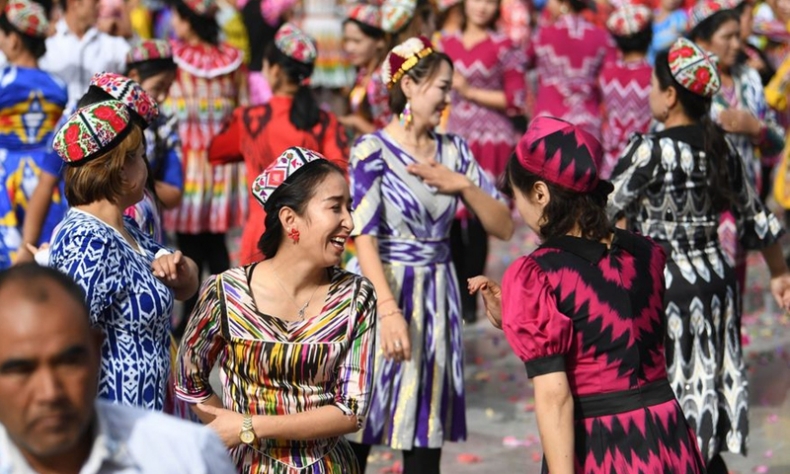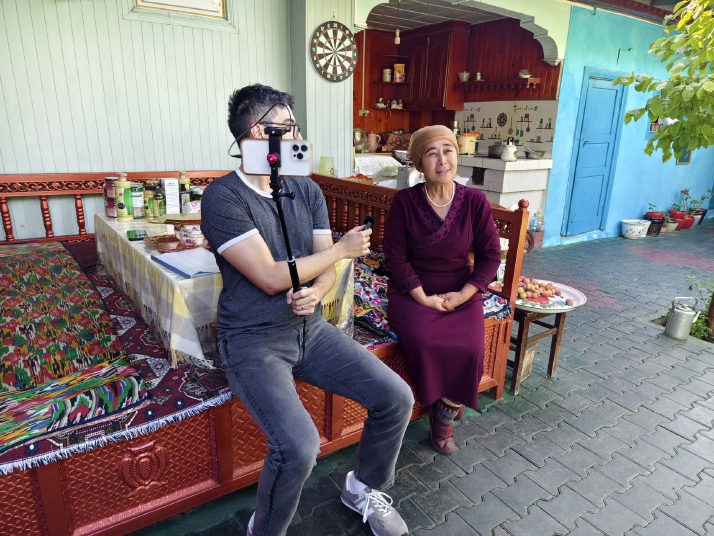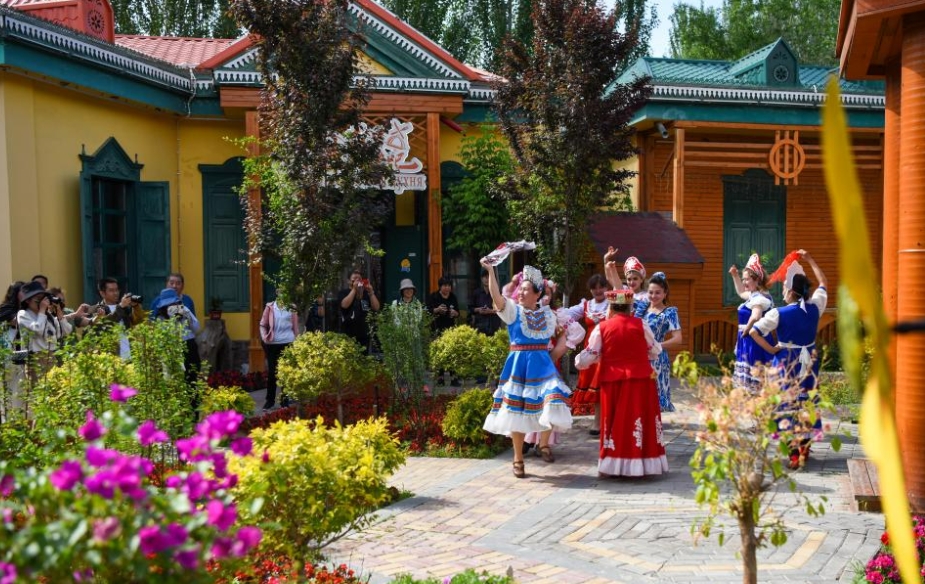Seeing Is Believing

I believe that through my observations and conversations with people there, I can draw the conclusion that Xinjiang is improving. It has shaken off extreme poverty. It has now reached a different stage of development, better than before.
So far, I have been to Xinjiang twice. The first time was at the beginning of 2020, when I spent about three days in Urumqi, the capital city of the region. The second time was in August and September of 2024, when I spent about a week there.
Like many individuals who live in the United States, my first impression of this land was shaped by media coverage. There is a lot of talk in Western media about Xinjiang being a place that’s rife with oppression, particularly of the Uygur people. We are told they have been suppressed, have had their culture interfered with and are not able to live the way they want to live because the Chinese Government is enforcing a policy of strict repression, including setting up concentration camps. I’ve been told that people are being oppressed in massive numbers and the word “genocide” has even been used.
At the time these reports surfaced, I had already begun to run a YouTube show, particularly focused on geopolitics and with a heavy emphasis on Eurasia. Russia and China are currently seen as adversaries by the United States and the potential conflicts between them would be equally dangerous for the people of the three parties and for the rest of the world. I believe that some of these potential conflicts arise from misunderstandings, so I hope my work offers people perspectives they may not have heard, especially the perspective coming from China, particularly on its progress, the role it plays in the world and the kind of relationship we should have with people in other countries.
This is what motivated me to learn more and more about Xinjiang and it’s also the reason I chose to travel there. It’s important to see with my own eyes, and to speak to people who offer a different perspective.
During my two trips to Xinjiang, I noticed that people’s lives are improving. It seems that every time I talked to someone, they told me about their incomes rising, being able to do more things, expanding their businesses and leading happier lives. This is completely contradictory to Western media reports.

During my most recent visit, I visited the home of an older Uygur woman. She and her family had turned their home into a business similar to what we’d call a café in the United States. It’s a place where people visit, relax and eat wonderful Uygur food. She talked about how her life has improved because of the growth of tourism and how she’s been able to expand and renovate, and will hopefully turn her home into a guesthouse one day. That will significantly increase her and her family’s revenue.
Our conversation was a little tricky. Her standard Chinese was not good so she spoke in Uygur, then a young neighbor translated her words into standard Chinese and my friend translated them into English. She told me that she only began learning standard Chinese in recent years because she now needs to serve tourists from all over China. She now understands a lot of standard Chinese and even some Cantonese and Shanghai dialect.
In Xinjiang, cultural tradition is everywhere. Uygurs may be the most populous ethnic group in the region, but there are also many ethnic groups living there. You can’t walk more than a few kilometers without witnessing some kind of expression of cultural tradition, whether it’s the Uygur people, Kazak people or other ethnic groups. They are all enjoying their cultural traditions and religious practices, keeping up their traditional living styles while also modernizing at a very rapid pace.
I visited a place called Six-Star Street in Ili Kazak Autonomous Prefecture. It’s a very diverse neighborhood where people of many ethnic groups live. I saw a Uygur musician playing traditional Russian songs on an accordion, with three Kazak women dancing. I was told that Russians also constitute an ethnic group in China, with many of them having mixed with other ethnic groups. Therefore, in Xinjiang, very few people consider themselves Russian, but you can still go there to eat Russian food and listen to Russian music. This is what I think is very unique about Xinjiang. This is the ethnic diversity I have never seen before.
What I found most striking while in Xinjiang is local people’s self-identity. I think people identify with their ethnic group, but it is certainly not the first thing that comes to people’s mind. They’re not thinking about how they’re different, as either a Kazak, Mongolian, Tajik or Kirgiz. What they’re thinking about is how they can have a better life. People here tend to be very happy when they are dancing and performing and it feels very much like this is what people do for fun and what they do to feel in touch with who they are.

Another narrative we hear in the West is that there is no freedom of religious belief in Xinjiang. I would like to share something that impressed me. I went to a mosque in Ili with a history of more than 270 years. I wanted to film some scenes inside, but there were many Muslims coming to pray. I was trapped in the crowd and had to participate with them. I remember the person who was moderating kept asking us to get closer to each other, because there were so many people coming in and he had to make sure that everyone had space on the carpet to pray. I was surrounded by many Uygur Muslims and they told me there are five practices every day, and people of all ethnic groups come here, not just the Uygurs. Anyone who believes in Islam can go there and they can pray together.
I was also able to interview the Imam of the mosque. He was very keen to emphasize that the recent renovations made to the mosque had maintained the particular cultural and religious traditions that this kind of mosque upholds and originally set out to express. It wasn’t modernized to erase their culture, but was rebuilt in the shape and form of the culture that they have been practicing for hundreds of years.
I feel very lucky to have learned from so many people who have been so generous in allowing me to talk to them, agreeing to me putting a phone camera in their face and asking “Hey, what’s it like here?” I believe that through my observations and conversations with people there, I can draw the conclusion that Xinjiang is improving. It has shaken off extreme poverty. It has now reached a different stage of development, better than before.
I hope I will visit the region again. To be honest, I enjoyed every day in Xinjiang, eating fantastic food, looking at the unique scenery and even dancing on the street with locals. People are super friendly, not only in Xinjiang but all over China. I also have a bigger goal, which is to show more of the reality here. I want to understand more about the important role Xinjiang plays in connecting with the Eurasian continent for the whole of China and the world at large. The overall trend of improvement in people’s lives in Xinjiang is closely related to China’s poverty alleviation programs as well as the Belt and Road Initiative, a China-proposed initiative that seeks to create greater connectivity along and beyond the ancient Silk Road routes. How do people live? How did these policies come about? How do these policies improve or not improve people’s lives? How have the people been involved in formulating these policies? This is what I’m most interested in.
It’s clear to me that Xinjiang is developing in the right direction and I am glad to have seen it.
The author is an independent journalist and geopolitical analyst based in the U.S.
 Facebook
Facebook
 Twitter
Twitter
 Linkedin
Linkedin
 Google +
Google +










